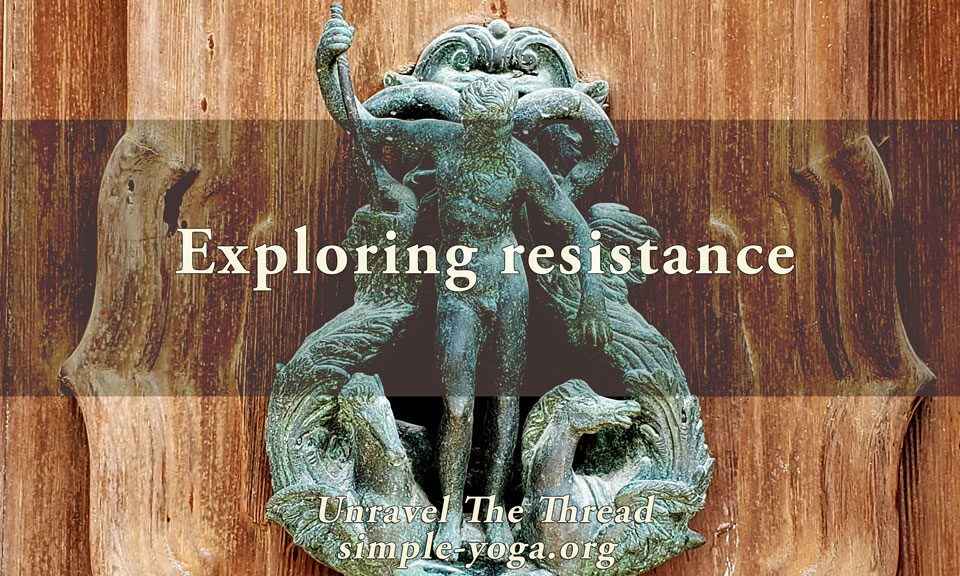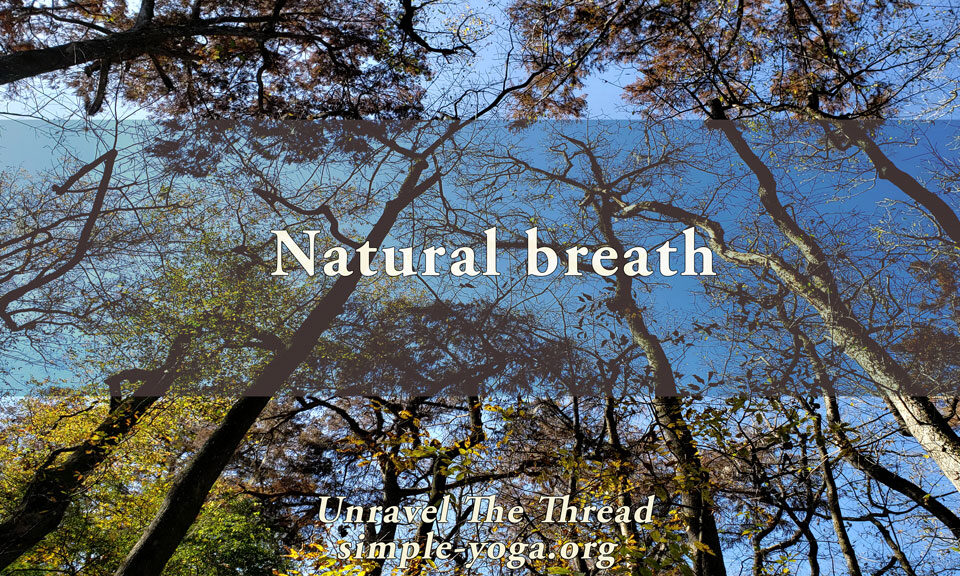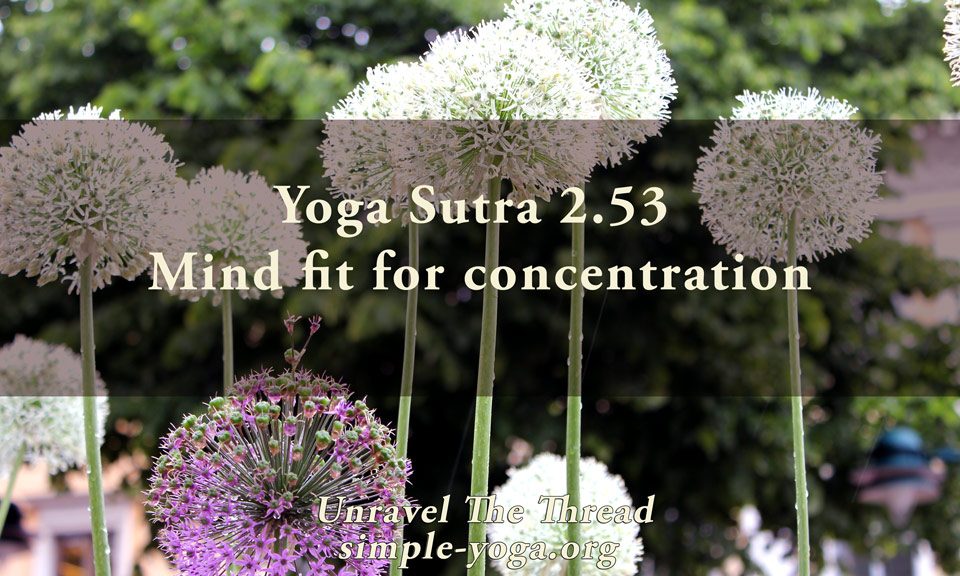Yoga and diet
February 8, 2008Inspired Practice
March 9, 2008Yoga and diet
February 8, 2008Inspired Practice
March 9, 2008Breathing Awareness



Two oceans
We can think of the earth as being surrounded by two oceans, an ocean of water and an ocean of air. The perpetual movement of these two oceans is the result of the interaction between the energy of the sun and the energy of the earth’s gravitational pull. The movement of these two oceans is essential to life as we know it. Similarly, the movement of air in and out of our body is the most evident manifestation of the circulation of energy that keeps us alive. It is not surprising that there is a whole set of practices in Yoga, known as Pranayama, dedicated to bringing our awareness to the breath. Developing awareness of the connections between our breathing patterns, our body, our mind and our emotions can help us develop a better understanding of who we are and of how we act.
Breathing as the focal point
If we understand Yoga as a journey of self discovery that integrates the actions of our breath, body, mind and spirit in order to be fully present, then it seems appropriate to find a central element to anchor and guide our Yoga practice. One of my favorite Yoga teachers, Erich Schiffmann, says in the beautiful video Ali Mac Graw Yoga Mind & Body, that the breath is the single most important element in Yoga practice. Given our mind’s inclination to focus on past or future and our body’s proclivity to develop habits, it makes a lot of sense to anchor our practice on the breath because the breath can only exist in the present moment. In addition, focusing on the breath as the main element in Yoga practice helps us remember that the quality of our life experience is closely connected to the quality of our breath.
Observing the breath
The easiest place to start is to observe our natural, spontaneous breath. An easy way to do this is to lie on a folded blanket on the floor with our back resting comfortably against the floor, our head aligned with the rest of the body, our knees bent and our feet flat on the floor. Closing our eyes we rest our attention gently on the movements of our abdomen as it rises and falls with each inhalation and exhalation. We do not need to change anything in the way we are breathing; we just lie there witnessing the breath, noticing any sensations, emotions, thoughts and feelings that emerge in the process. We can try this for 8 to 10 rounds (each round consisting of one inhalation and one exhalation). This can be quite relaxing.
We can continue the process of exploring our breath by gently, without forcing, deepening our inhalation and exhalation. As we observe our breath we might notice that sometimes the inhalation/exhalation is not smooth but irregular and uneven. In such cases, it is helpful to breathe more slowly and softly until the whole breathing process is as smooth as possible. Again, we can take this opportunity to notice any sensations associated with different ways of breathing. As we deepen our breath some questions may start emerging, such as am I breathing correctly? Should my inhalation start in the chest or in the abdomen?
Breath integrity
When those questions emerge, one viable way to finding answers (besides asking our Yoga instructor) is to explore the options that we have. For instance, we can breathe normally for a few rounds of breath, and then we can initiate the inhalation in the lower abdomen for some rounds of breath, noticing the differences in the sensations that result. Then we return to spontaneous breathing. We can try different ways of breathing, always paying close attention to how we feel as a result. As we explore our breath we start noticing patterns and how breathing in specific ways helps to create different sensations.
A useful guiding criterion for choosing how to breathe is integrity. In other words, when our breath has integrity, it feels energizing and nourishing. Furthermore, when the breath has integrity it feels whole, unimpaired and unobstructed with neither inhalation nor exhalation collapsing. Obviously, it is important that we adjust our breath to the requirements of what we are doing. Consequently, in some cases, the breath may need to be more energizing while in other cases we may need for the breath to be calming and relaxing. However, even though the characteristics of the breath may change, breathing with integrity will ensure that the breath is supporting our actions.
Developing more awareness of the connections between the breath and how we feel can be useful in choosing the best way of breathing in particular situations. I hope this is helpful to start exploring your breath and to become more aware of the connections between your breath, your state of mind and your emotions.
Namaste.


